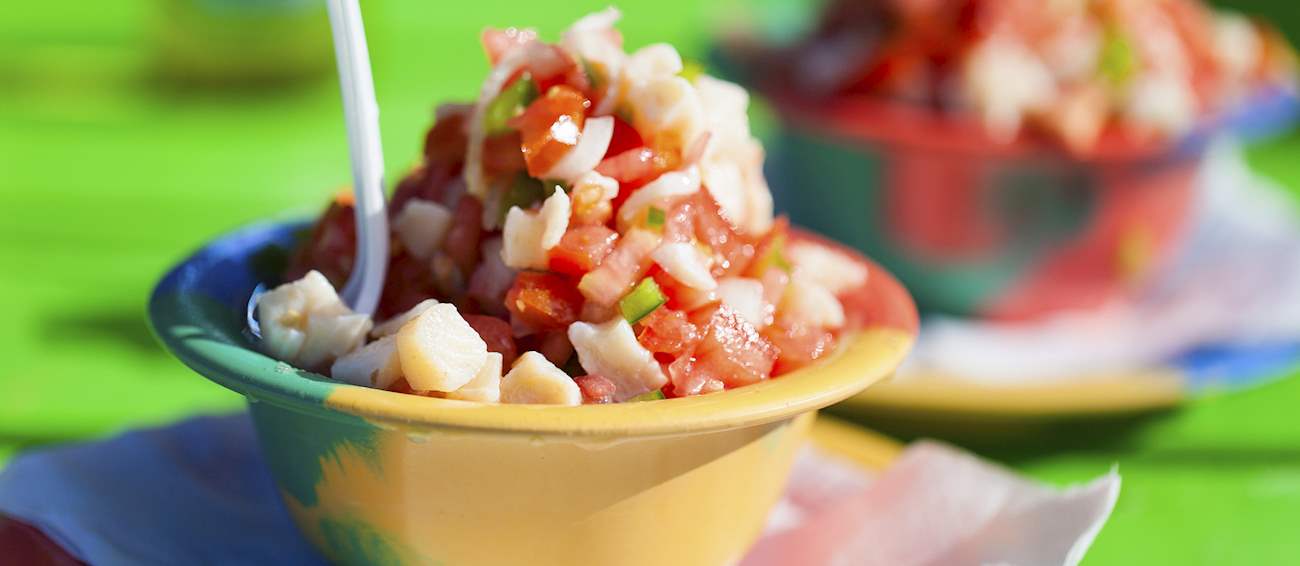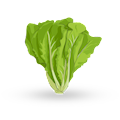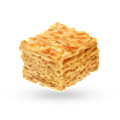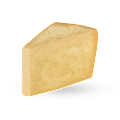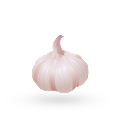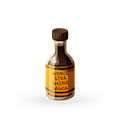MAIN INGREDIENTS
The iconic Caesar salad was named after its creator Cesare (Caesar) Cardini, an Italian immigrant who lived in San Diego but, circumventing Prohibition laws in the United States, operated a popular restaurant in Tijuana, just south of the Mexican border.
Back then, in the 1920s, during the Prohibition era, Tijuana was flourishing as many Californians, including Hollywood jet set, would often drive over to party and enjoy the good life. And just like it was the case with many other world-famous dishes, Caesar salad was invented through sheer ingenuity and improvisation.
MOST ICONIC Caesar salad
View moreConch salad is one of the most popular Bahamian dishes that is both a flavorful comfort food and a colorful, edible work of art. The key ingredient in the dish is conch, a shellfish that is unfortunately slowly dying out due to its rapid depletion in the Caribbean seas.
Other ingredients include finely chopped tomatoes, bell peppers, onions, and a marinade of goat pepper, lime, and orange juice, a mixture that also partly cooks the raw white conch meat. However, there is also a tropical version of the salad with apples, pineapple, and mango added to the regular salad, with a less spicy flavor.
MOST ICONIC Conch Salad
View moreTexas caviar is a traditional salad originating from Texas. Despite the name, there is no roe in Texas caviar – the salad is usually made with a combination of black-eyed peas, garlic, scallions, bell peppers, jalapeños, celery, coriander, parsley, red wine vinegar, vegetable oil, sugar, salt, and pepper.
The oil, vinegar, sugar, garlic, salt, and pepper are whisked in a bowl. The remaining ingredients are added to the bowl, and everything is tossed to combine. The salad is seasoned with salt and black pepper to taste, and it's then left to sit for about an hour before serving.
A shining example of American ingenuity and creativity, Cobb salad was invented in the 1930s at The Brown Derby, a famous Los Angeles restaurant whose owner, Robert Cobb, found some leftovers in the kitchen - hard-boiled eggs, salad greens, chicken breast, avocado, chopped bacon, tomatoes, and Roquefort cheese among them.
He tossed all of the ingredients with some salt, pepper, and a vinaigrette consisting of olive oil, red vinegar, lemon juice, garlic, and Worcestershire sauce, and Cobb Salad started its way toward fame. The composed salad's popularity relies entirely on the careful preparation of each ingredient and their distinct textures, from juicy over crunchy to creamy.
MOST ICONIC Cobb Salad
View moreMAIN INGREDIENTS
Waldorf salad had been invented in 1896 by Oscar Tschirky, a dining room manager at New York's Waldorf-Astoria Hotel. Originally, the salad consisted of apples, celery, and mayonnaise, and was a huge success. Interestingly, finely chopped walnuts were added to the salad much later, in 1928, although most people associate the salad with walnuts as the key ingredient.
Today, Waldorf salad is usually served cold as an appetizer, on a bed of lettuce, while ingredients such as chicken, raisins, or grapes are sometimes added in the modern versions of this elegant dish.
MAIN INGREDIENTS
Originating from the Dutch term koolsla, meaning cabbage salad, coleslaw is nowadays a true American staple and a side dish that's often served with barbecued meat or fried chicken. Originally, it was brought over to New York state in the 18th century by the Dutch settlers.
It consists of shredded cabbage, mayonnaise, carrots, buttermilk or sour cream with vinegar, sugar, and other seasonings, depending on the cook and regional variations. Some of the variations have other ingredients such as salad dressings, celery seeds, grated cheese, pineapple, or peppers.
VARIATIONS OF Coleslaw
MOST ICONIC Coleslaw
View moreDespite its name, Chinese chicken salad is an American dish, believed to be invented by an Austrian chef named Wolfgang Puck who is doing Asian fusion cuisine in America. Others claim that the dish was invented during the 1930s, somewhere in the United States.
Regardless of the origins, the salad, consisting of shredded chicken, lettuce, vegetables, fried noodles, and almonds is popular throughout the States. The Chinese part in its name refers to the numerous Chinese-style seasonings such as soy, sesame, and ginger.
MOST ICONIC Chinese Chicken Salad
View moreSalpicón de res is a flavorful Mexican salad that is popular throughout Latin America. It consists of beef steak pieces, onions, tomatoes, hot chiles, and avocado slices. The salad is usually seasoned with lime juice, salt, pepper, vinegar, olive oil, and oregano.
It can be consumed on its own or used as a topping for tostadas and tortillas.
Ensalada de nopalitos is a traditional salad originating from Central Mexico. Although there are many versions, it's usually made with a combination of nopal cactus pieces, lime juice or vinegar, olive oil, oregano, onions, salt, and cilantro. The salad ingredients are simply mixed and set aside for the flavors to blend, for about an hour.
When served, a dish is lined with lettuce leaves and the salad is placed on top. It is then topped with jalapeño strips, sliced onions, crumbled queso fresco, and tomato pieces.
MAIN INGREDIENTS
A chef's salad is a big salad that is usually served as a meal of its own. It consists of a variety of vegetables, hard-boiled eggs, cheese, and meats such as ham or turkey meat. The salad can be served with a variety of different dressings. No one can agree about the origins of chef's salad, so there are quite a few theories about its invention.
Some claim that it originated from salmagundi, a 17th-century dish consisting of anchovies, chopped meat, eggs, onions, and oil. Others claim that Cobb salad was the true inspiration, while most believe that chef's salad was created in the 1940s by Louis Diat, a chef at the Ritz-Carlton Hotel in New York City.
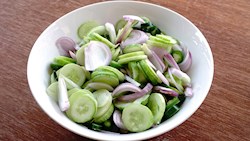

TasteAtlas food rankings are based on the ratings of the TasteAtlas audience, with a series of mechanisms that recognize real users and that ignore bot, nationalist or local patriotic ratings, and give additional value to the ratings of users that the system recognizes as knowledgeable. For the “Top 27 North American Salads” list until March 20, 2025, 1,650 ratings were recorded, of which 1,404 were recognized by the system as legitimate. TasteAtlas Rankings should not be seen as the final global conclusion about food. Their purpose is to promote excellent local foods, instill pride in traditional dishes, and arouse curiosity about dishes you haven’t tried.
